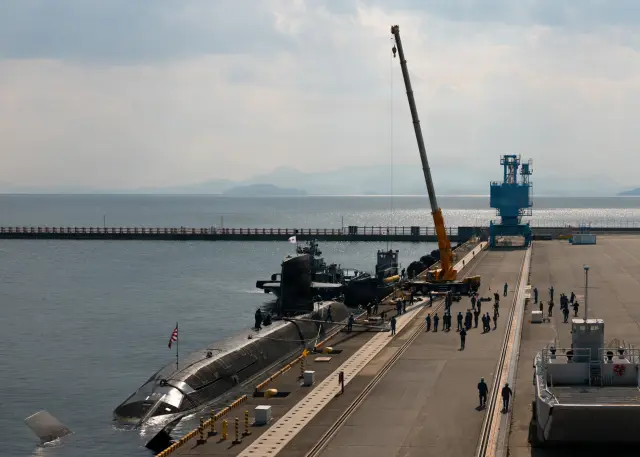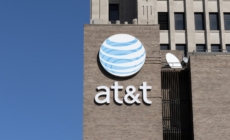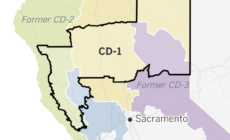-
Senior Husky Trying To Act Like a Puppy Leaves Internet Heartbroken - 15 mins ago
-
Ex-cop testifies in own defense about shooting unarmed Whittier man - 23 mins ago
-
Tucker Carlson, Nick Fuentes and the Right’s ‘Groyper’ Problem - 38 mins ago
-
California To Revoke Thousands of Driver’s Licenses - 50 mins ago
-
The deep bonds on an Altadena street driving neighbors to rebuild - about 1 hour ago
-
Ken Burns’s ‘The American Revolution’ Speaks to Our Cultural Clashes - about 1 hour ago
-
7 Intelligent Dogs Perfect for First-Time Owners - about 1 hour ago
-
L.A. city told the court there were 88 beds at a homeless shelter, but 44 of them were missing - 2 hours ago
-
AT&T Data Breach Settlement: Who Is Eligible and How to Claim $7,500 - 2 hours ago
-
Hurricane Melissa Leaves Behind a Staggering Homelessness Toll in Jamaica - 2 hours ago
US Alliance Receives Submarine Boost
The United States and its treaty ally Japan recently conducted a submarine exercise as they continue to strengthen their defense posture amid China’s growing naval threat.
The Chinese Foreign Ministry did not immediately respond to a request for comment.
Why It Matters
China has the world’s largest navy by hull count, part of a military buildup meant to challenge U.S. military dominance and its allies in the western Pacific. Japan, which hosts about 60,000 American troops, plays a key role in the U.S. island chain strategy aimed at defending against potential Chinese aggression by projecting military power.
Facing China’s expanding military presence and reach through naval deployments, the U.S. Navy has deployed its nuclear-powered submarines across the western Pacific as a deterrent. Meanwhile, Japan is considering building submarines powered by nuclear reactors, as the U.S. ally strengthens its counterstrike and standoff defense capabilities.
What To Know
In a set of photos released on Monday by Marine Corps Air Station Iwakuni, a key U.S. military facility in Japan, the Japan Maritime Self-Defense Force submarine JS Unryu was seen docking at the base’s harbor for a resupply operation on October 27.

According to local media, it was the first time a Japanese submarine had visited Marine Corps Air Station Iwakuni. The base said its harbor offered “multiple ports of entry” to U.S. and Japanese forces and that the operation demonstrated logistical capabilities.
The resupply operation was part of a larger joint exercise conducted by Japan’s Air, Ground and Maritime Self-Defense Forces from October 20 to 31, local media reported. The war game was held across the country, including at U.S. military facilities.
While pier-side at the base, the Unryu was loaded with torpedo-shaped test equipment. The move sought to verify whether resupply operations could be conducted at ports other than the submarine’s home port, expanding the scope of operations, the report said.
A Japan Maritime Self-Defense Force official told local media that the ability to resupply a vessel and get it back on deployment as quickly as possible was a significant advantage, particularly when U.S. military facilities are used instead of civilian ports.
Meanwhile, USS Hawaii, a Virginia-class fast-attack submarine, was spotted arriving at Yokosuka Naval Base in Japan on Sunday, a move confirmed by the local Japanese government. The U.S. nuclear-powered submarine remained at the base as of Friday.
According to the U.S. Navy, the Hawaii is designed to conduct missions, including anti-submarine, anti-surface ship and strike warfare, as well as intelligence, surveillance and reconnaissance. The submarine is homeported at Joint Base Pearl Harbor-Hickam.
What People Are Saying
U.S. Pacific Submarine Force spokesperson Commander Rick Moore previously told Newsweek: “We are making historic investments in our undersea warfare capabilities and continue to work with allies and partners to maintain a secure, prosperous, free, and open Indo-Pacific.”
Japan’s 2025 defense white paper said: “China has been intensifying its activities across the entire region surrounding Japan, including in the East China Sea, particularly in the area around the Senkaku Islands, the Sea of Japan, and the western Pacific Ocean, extending beyond the so-called the first island chain to the second island chain.”
What Happens Next
It remains to be seen whether the U.S. will provide assistance if Japan moves forward with its nuclear-powered submarine program. U.S. President Donald Trump recently voiced support for South Korea’s development of nuclear-powered submarines.
Source link




















